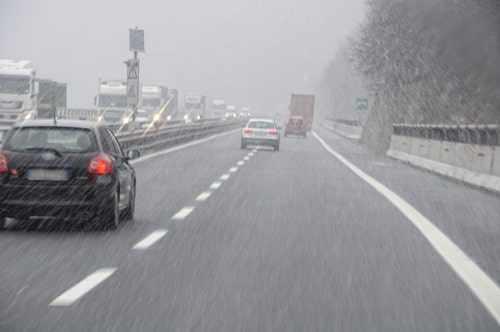Driving in the rain is a lot more hazardous than people realize. Not only does rain limit visibility and make roadways slick, heavy downpours and cloudbursts can cause hydroplaning and make it nearly impossible to tell where you are on the roadway.
Are there any steps I can take to ensure my safety while driving in the rain?
If you were involved in a car accident during any type of inclement weather, our Virginia Beach car accident lawyers can review your case and determine if you are eligible for compensation. Visit the contact page on our website or give us a call today.
What Makes Driving in the Rain so Dangerous?
Car accidents can take place no matter what the weather is like. However, a study conducted by Accident Analysis and Prevention determined that rain increases the severity of car accidents. This is especially true in the case of smaller vehicles.
In addition to this, a report published by the National Highway Traffic Safety Administration states that rain makes asphalt slippery, which makes it difficult for drivers to maintain control of their vehicles. Basic driving maneuvers that would normally be executed with ease suddenly become more challenging to perform when the driving surface is wet.
More challenges arise when roadways are flooded. Research has found that it takes only one foot of moving water to sweep away a standard passenger vehicle and just two feet to spirit away an SUV or truck.
Precautions to Take When Driving in the Rain
If you are able to avoid driving in heavy rain, it is best to do so. If you absolutely must go out, there are some safety measures you can take to decrease your chances of being involved in an accident:
Reduce Your Speed
If it is raining, driving at a slower pace is normally recommended. Excess speed is a common contributing factor to motor vehicle accidents under normal conditions, but during inclement weather, such as a thunderstorm, it becomes even more dangerous. It is also a good idea to take turns at slower speeds.
You Need Extra Braking Distance
Be sure to leave yourself plenty of extra braking distance between your vehicle and the vehicle in front of you. Allowing even just an extra foot between cars can go a long way toward preventing a serious rear-end crash. Since the amount of time you need to come to a full and complete stop increases in the rain, the more space you leave between vehicles, the less likely you are to be involved in an accident.
Replace Your Windshield Wipers
Good quality windshield wipers can be a real lifesaver when you have to drive in the rain. People often forget to inspect and replace their windshield wipers until they need to use them and suddenly realize they aren’t helping. This is especially true in areas that do not typically get a lot of rain. Replace your windshield wipers with a high-quality brand as often as needed and check them from time to time by using your windshield spray cleaner.
Use Your Headlights
Virginia law requires drivers to use their headlights between dusk and dawn, and when it is smokey, rainy, snowing, foggy, dark, sleeting, or difficult to see anything more than 500 feet away. Unfavorable atmospheric conditions substantially decrease visibility. If you are having difficulty seeing other vehicles, they are having difficulty seeing you so make sure that your headlights are functioning and turned on.
Do You Need a Virginia Personal Injury Lawyer?
Personal injury cases can be extremely challenging when inclement weather is involved. To make sure you receive the legal advice and financial recovery you deserve, you should work with a reliable personal injury firm that has an outstanding record of successful case histories.
The Virginia Beach personal injury firm of Shapiro, Washburn & Sharp is backed by more than four decades of experience, skill, and knowledge. To schedule your free consultation, call us at (833) 997-1774.
Related Content
- Hydroplaning and Car Crash Risks
- Who Is Liable in a Bad Weather Car Accident?
- How Much is a Personal Injury Case Worth?
- Virginia Car Accident Guide
